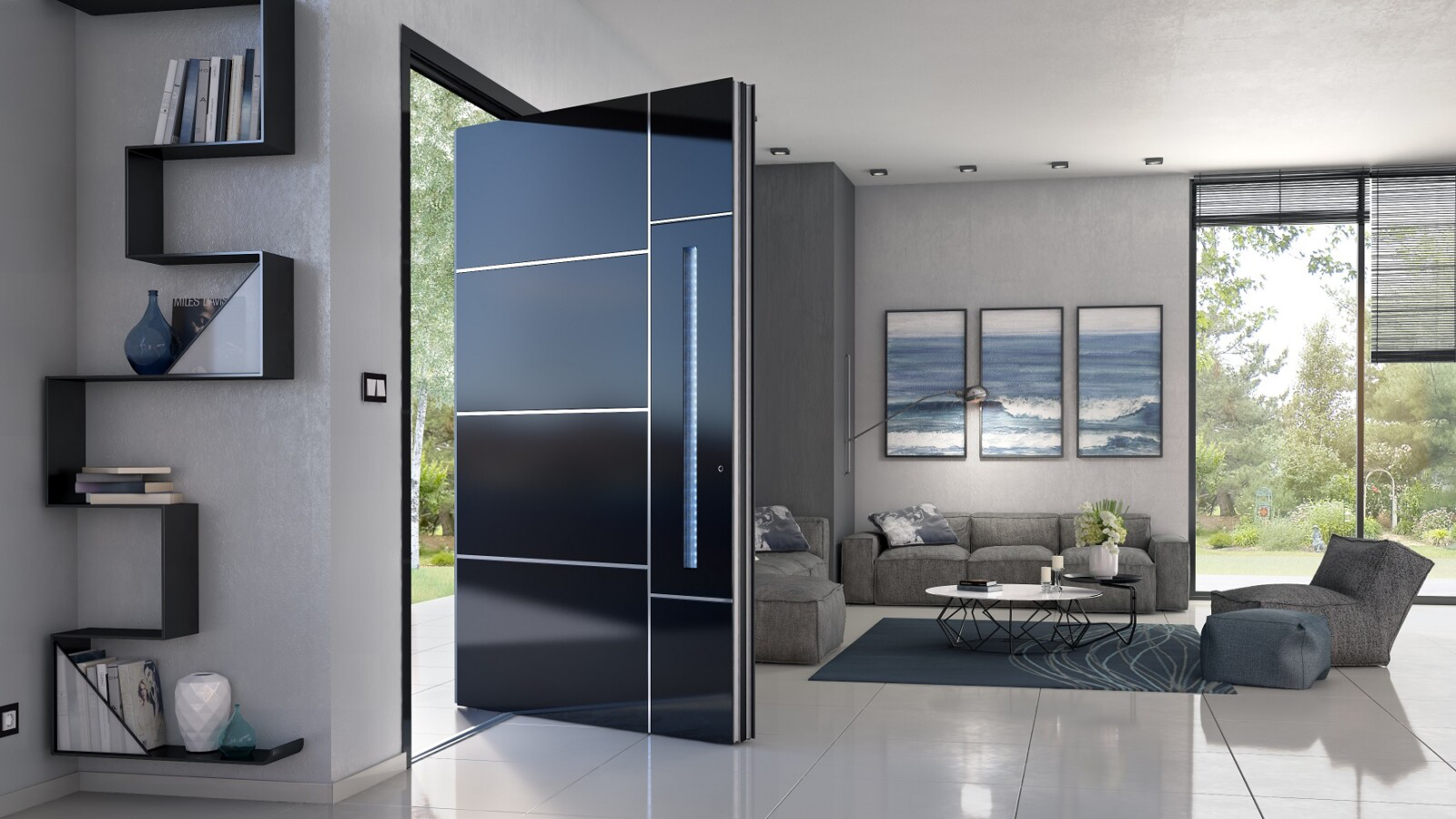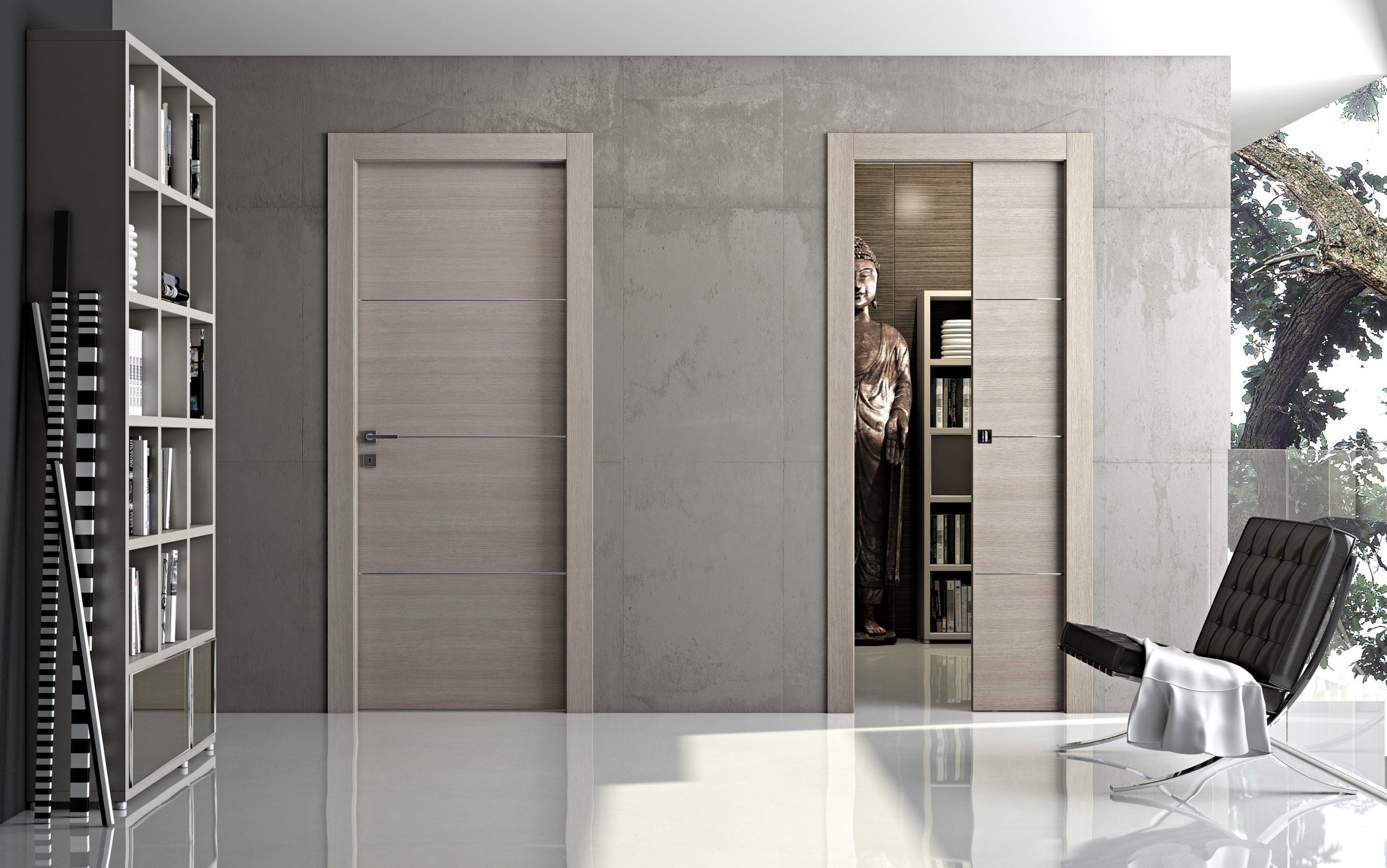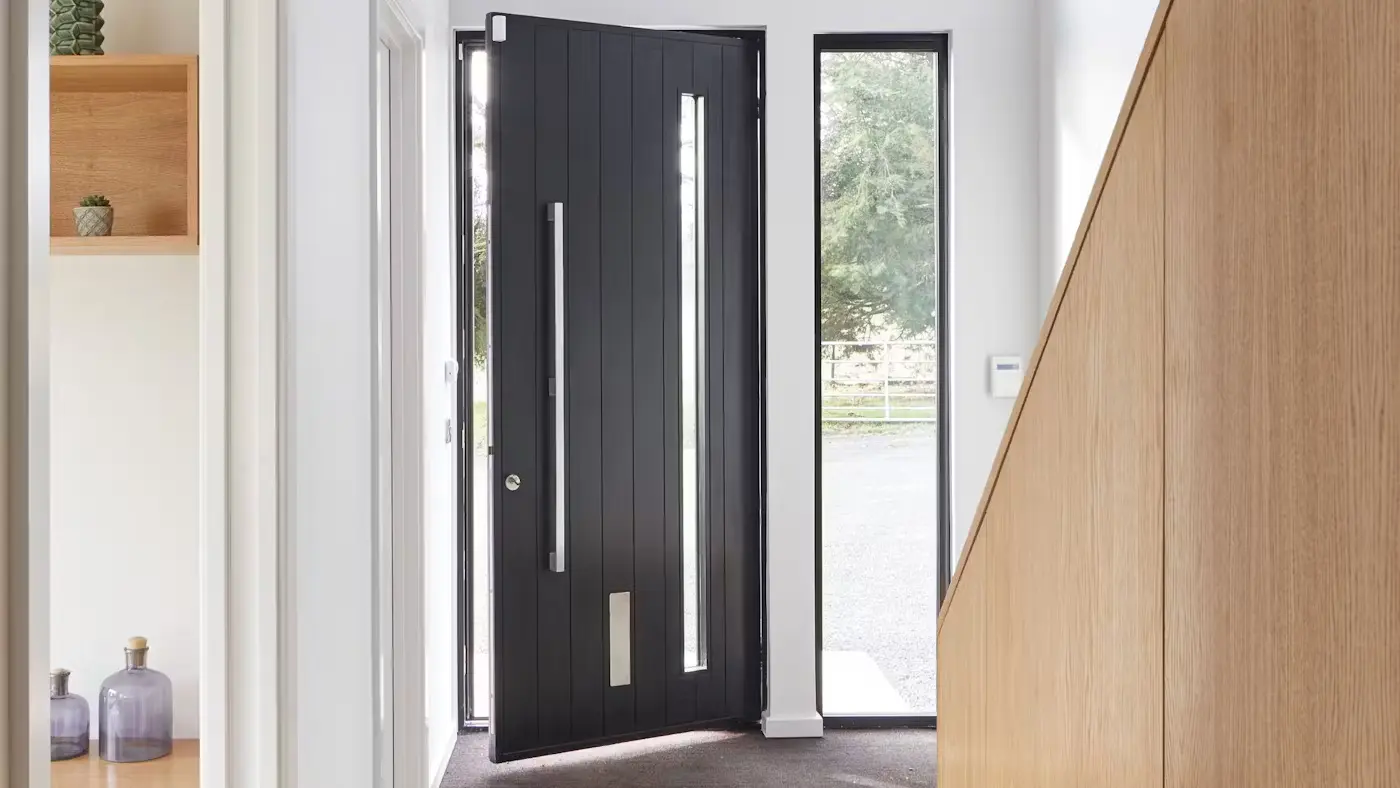What is a slab interior door?
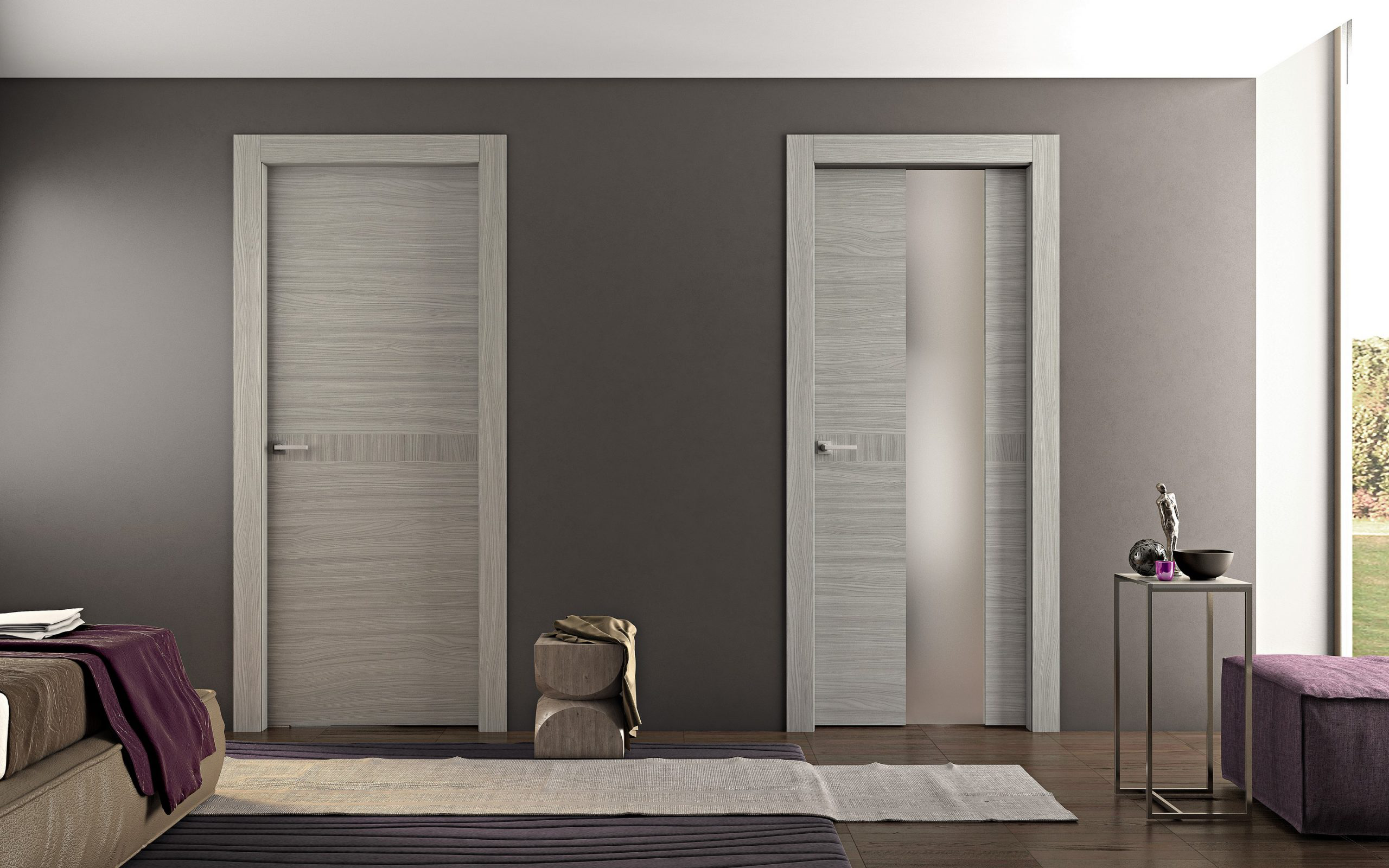
What is a Slab Interior Door?
Definition of a Slab Door
A slab interior door is one of the most common and flexible types of doors used inside homes and offices. In simple terms, a slab door is just the door itself — a solid, flat piece without any frame, hinges, or hardware attached. Think of it as a clean “blank door panel” waiting to be customized. You can choose the material, finish, and handle to match your space.
Unlike a pre-hung door, which comes with a frame and is ready to install, a slab door gives you more freedom. It’s perfect for replacing an old door or for projects where you already have a door frame in good condition. Because of its simplicity, the slab door is often used in remodeling, DIY home upgrades, and modern interior designs.
One of the main things that makes a slab door different is its versatility. You can buy it as a solid core slab door for better sound insulation and durability, or as a hollow core slab door if you want something lightweight and budget-friendly. Solid core options are great for bedrooms, offices, or any space where privacy matters. Hollow core doors, on the other hand, are perfect for closets or rooms that don’t need much sound control.
Key Characteristics of Slab Door
The key characteristics of slab doors include:
- Flat Surface: Usually smooth or with simple panels that fit most design styles.
- Customizable Look: You can paint, stain, or veneer the door to fit your décor.
- Material Variety: Available in wood, MDF, composite, and even glass options.
- Flexible Installation: Works well with both old and new frames.
Types of Slab Door
When choosing a slab door, it’s important to understand the different types available. Each type offers a unique feel, level of durability, and style. The most common kinds are solid core slab doors, hollow core slab doors, panel slab doors, and flush slab doors. Let’s take a closer look at each one so you can pick the best fit for your home.
Solid Core Slab Door
A solid core slab door looks just like a regular door, but inside, it’s filled with a dense material that gives it extra weight and strength. It usually has a wood veneer or MDF (medium-density fiberboard) surface, making it smooth and ready to paint or stain.
Because of its solid build, this type of slab interior door offers excellent soundproofing and insulation. It’s ideal for bedrooms, home offices, or any space where you want more privacy. Plus, it feels heavier and sturdier when you open or close it — a small detail that makes a big difference in how a room feels.
Another great thing about solid core doors is their durability. They don’t warp easily and can handle everyday wear and tear. They cost more than hollow core options, but the long-term value often makes them worth it. Many homeowners choose solid core slab doors for both their performance and premium look.
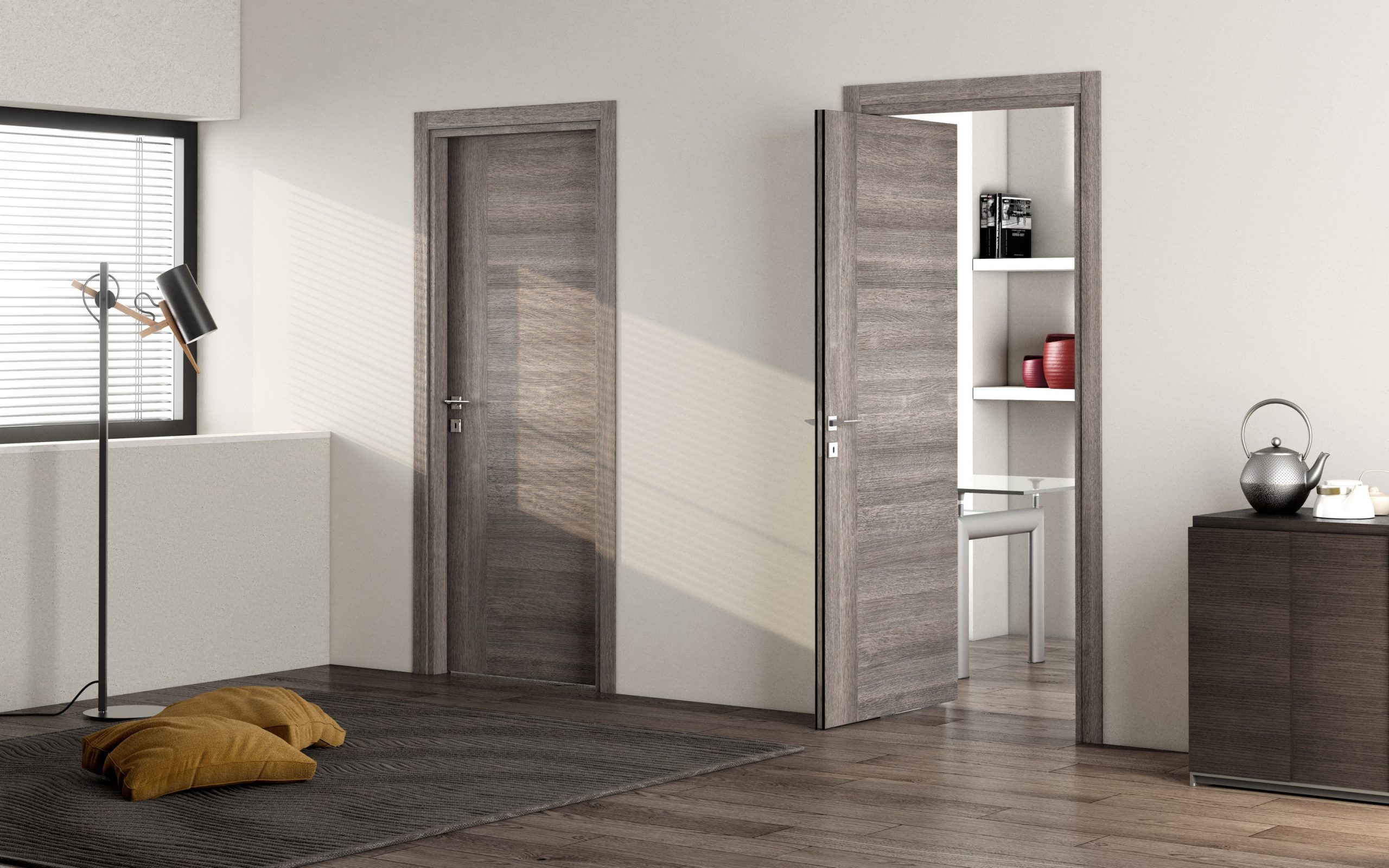
Hollow Core Slab Door
If you’re looking for a more affordable and lightweight option, the hollow core slab door might be the way to go. Unlike the solid core version, it has a honeycomb or cardboard-style structure inside that keeps it light while maintaining its shape.
This makes hollow slab doors much easier to install and handle — perfect for quick renovations or DIY projects. They’re also ideal for rooms like closets, pantries, or guest bedrooms where sound insulation isn’t a major concern.
While they don’t offer the same level of noise control or sturdiness as solid doors, hollow core slab doors still provide a clean, modern look at a lower cost. You can paint them in any color to match your walls or trim, giving your interior a simple and cohesive style.
Panel Slab Door
A panel slab door adds a touch of design and character. Instead of being completely flat, it features raised or recessed panels that create a more traditional and decorative look. You’ll find these doors in both modern and classic homes because they blend beauty with function.
Panel interior slab doors are available in several materials — from solid wood to MDF — and they can have two, four, or even six panels depending on your taste. They work well in living rooms, dining rooms, or any area where you want to make a subtle design statement.
These doors are a great way to bring detail and depth into your home without going overboard. And since they’re still slab-style, you get flexibility in how you finish or install them.
Flush Slab Door
For a sleek and minimalist style, nothing beats the flush slab door. This type of interior door has a completely flat surface with no panels or texture. It’s often made from MDF, plywood, or veneer over a solid or hollow core.
Flush slab doors fit perfectly in modern homes, offices, or apartments where clean lines and simple design are key. They’re also easy to maintain — just wipe them down, and they’ll look as good as new.
Because of their smooth surface, flush doors are a favorite among designers who love a seamless, contemporary aesthetic. You can customize them with a glossy finish for a modern look or a matte finish for a softer feel.
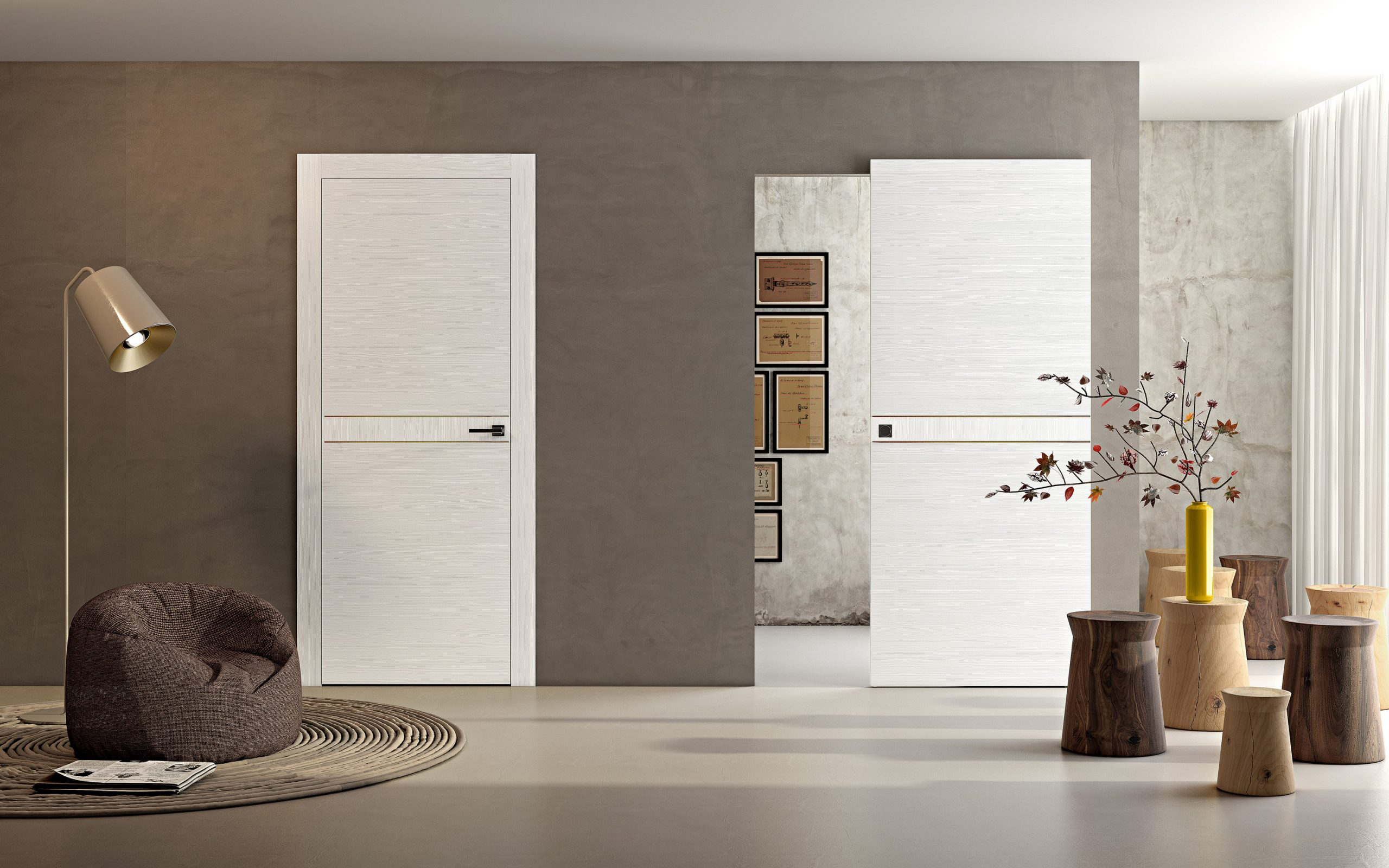
Advantages of Slab Interior Door
When choosing an interior door for your home, slab doors stand out as a durable and customizable option. They offer a range of benefits, including long-lasting durability and plenty of ways to make them your own. Let’s dive deeper into these advantages.
Durability and Longevity
One of the biggest reasons why slab doors are such a popular choice is their durability. Whether you choose a solid core slab door or a hollow core slab door, they are built to last. Solid core doors, in particular, are heavy and sturdy, making them perfect for areas with high traffic. They can withstand daily wear and tear much better than many other door types, like hollow core or pre-hung doors.
Slab interior doors are made from materials that are meant to hold up over time. Solid wood and MDF are commonly used for slab doors, both of which offer excellent strength and resistance to damage. Because of their simple construction, slab doors don’t easily get warped or deformed. This makes them a fantastic investment for anyone looking for long-term value.
When installed properly, slab doors can last for many years, maintaining their structural integrity and appearance. The solid construction of slab interior doors means they won’t sag or loosen, even with frequent use. If you opt for a solid core slab door, you’ll also benefit from added sound insulation, which helps with noise reduction — perfect for bedrooms or offices.
Customization Options
One of the best features of slab doors is how customizable they are. Unlike pre-hung doors, which come as a finished product, slab doors can be tailored to fit your specific needs and style preferences. Whether you’re upgrading a room or building a custom home, the customization options for slab interior doors are almost endless.
Materials:
You can choose from a variety of materials for your slab door. Popular options include solid wood, MDF, and even metal. Wood offers a classic, natural look, while MDF is a more affordable and versatile choice. For a modern twist, you can also explore composite materials.
Sizes:
Slab doors are available in various standard sizes, but they can also be custom-cut to fit specific openings. Whether you have a standard doorway or a non-traditional frame, you can find or create a door that fits perfectly.
Finishes:
One of the most exciting aspects of slab doors is how you can finish them. You can choose from a variety of paint colors or stains to match your room’s color scheme. If you prefer a more sophisticated look, you can also go for veneers or laminates, which add texture and depth to the surface.
Popular Customization Trends
The customization trends for slab doors are also evolving. Here are some popular options:
- Paint: A bold color on a slab door can add character to a room. Many people are now opting for deeper shades like navy, charcoal, or even black for a dramatic, modern effect.
- Veneer: For a natural wood appearance without the high price tag, veneers are a great option. They come in various wood types, from oak to walnut, and give the door a luxurious finish.
- Trim Styles: Adding custom trim around a slab door can make it stand out even more. Whether you choose a clean, straight trim for a minimalist look or a more intricate design for a traditional feel, trim styles can completely change the door’s overall aesthetic.
Summary
In short, slab interior doors offer durability that stands the test of time, along with incredible customization options that allow you to make them uniquely yours. Whether you want a traditional look with wood veneers or a modern feel with sleek paint, slab doors can be tailored to suit your taste and functional needs.
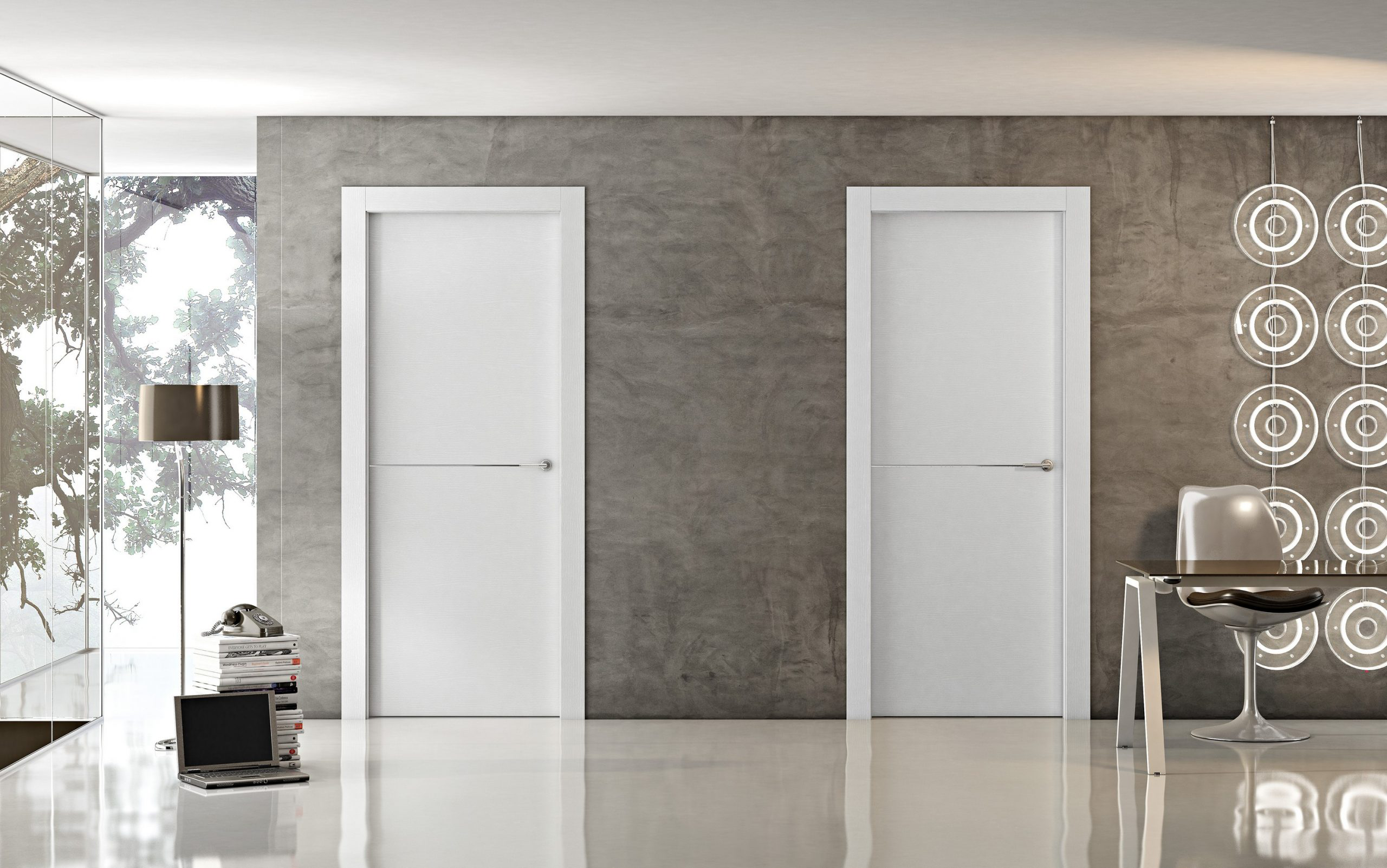
When to Choose Slab Doors?
Slab doors offer great flexibility, making them a popular choice for various types of interior spaces. Whether you’re remodeling your home, building a new one, or designing a commercial space, slab doors can be the perfect solution. Here’s when and where to choose them.
Ideal Applications for Slab Interior Doors
Residential: Bedrooms, Closets, Bathrooms
In residential settings, slab doors are especially suited for bedrooms, closets, and bathrooms. These areas require doors that are both functional and stylish, and slab interior doors fit the bill perfectly.
Bedrooms:
A solid core slab door can enhance privacy and reduce noise, creating a peaceful and quiet environment ideal for restful sleep. Whether you prefer a classic panel door or a modern flush door, slab doors provide a wide range of options to match any bedroom style.
Closets:
For closets, especially walk-in closets, a slab door is a great choice. Since these doors don’t have to be as heavy-duty or soundproof, a hollow core slab door works well here. Plus, you can easily customize it with a paint color or trim style to match your closet’s design.
Bathrooms:
In bathrooms, slab doors offer durability and a clean look. Flush slab doors are often chosen for their sleek, modern appearance. Solid core doors are also ideal for ensuring privacy, especially in shared living spaces.
Commercial: Offices, Meeting Rooms
Slab doors are also popular in commercial settings. Offices, meeting rooms, and conference rooms benefit from the durability and professional appearance that these doors provide.
- Offices: Slab doors in office spaces can enhance the look of the room while also providing the necessary sound insulation. A solid core slab door is often preferred in these environments to help block out noise and ensure a more focused work environment.
- Meeting Rooms: When it comes to meeting rooms, a slab door offers a professional, clean look. These doors are perfect for creating private spaces for meetings and discussions, and they can easily be customized to match the office’s interior design.
Common Scenarios to Choose a Slab Door
Remodeling and Renovation Projects
If you’re remodeling or renovating a home or office, slab doors are often the ideal choice. Since they come without frames, slab doors are easy to integrate into existing door frames. This makes them especially handy for remodeling projects where you might want to update the look of a room without replacing the entire door structure.
In renovation projects, you can also choose from a variety of slab door types, from solid core slab doors for soundproofing to hollow core doors for more budget-friendly options. Whether you’re updating a bedroom, bathroom, or office, a slab door can make the transformation smooth and affordable.
New Builds and Custom Interior Designs
When building a new home or office space, slab doors are a perfect choice. They are often used in custom interior designs where a sleek, modern look is desired. Because slab doors come in a variety of finishes, from wood veneer to smooth MDF, they can easily be customized to fit the unique style of your space.
In new builds, slab doors can be used throughout the house or building, from bedrooms to common areas to bathrooms, ensuring a consistent look. They are also well-suited for custom designs, allowing you to add your personal touch to each room. For instance, you can choose a panel slab door for a traditional look in one room and a flush slab door for a minimalist design in another.
Summary
In short, slab interior doors are ideal for both residential and commercial spaces, whether you’re renovating an old space or building a new one. Their customizability, durability, and ease of installation make them a smart choice in any design scenario. From bedrooms to offices, and from remodels to new builds, slab doors offer a solution that fits a wide range of needs.
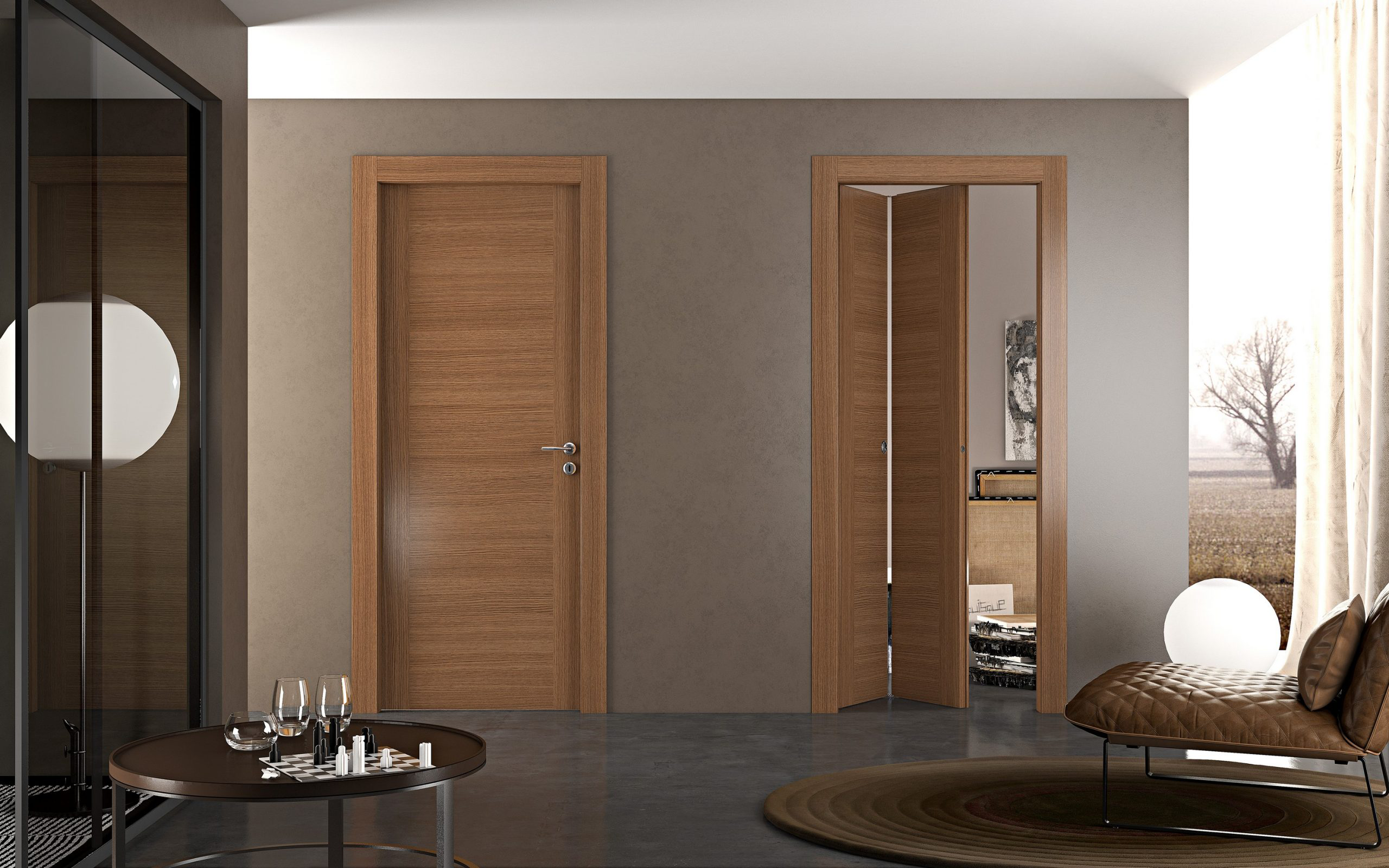
Maintenance and Care for Slab Interior Door
To keep your slab interior doors looking their best, it’s essential to maintain them regularly. Whether you have a solid core slab door or a hollow core door, taking care of them will help extend their lifespan and keep your home looking fresh. Here are some practical tips for cleaning, upkeep, and repairing your slab doors.
Cleaning and Upkeep
Keeping your slab doors clean is simple, and it doesn’t require special products or tools. With just a little effort, you can maintain their appearance and ensure they stay looking new.
Easy Cleaning Methods:
Start by dusting your slab doors with a soft cloth or a microfiber duster. This will help prevent dirt and debris from building up on the surface. For a deeper clean, use a mild cleaner, like dish soap diluted in water, and wipe the door with a damp cloth. Be careful not to use excessive water, as this can damage the finish over time.
If your slab door has glass panels, use a glass cleaner to remove fingerprints and smudges. For wooden slab doors, avoid harsh chemical cleaners, as they can damage the finish. Instead, opt for a wood-friendly cleaner to maintain the integrity of the surface.
Best Cleaning Products:
For solid core slab doors or hollow core doors, you’ll want to use a gentle cleaning solution. Here are a few of the best options:
- Wooden Doors: A mild wood cleaner like Murphy’s Oil Soap is ideal for keeping wooden slab doors looking shiny and fresh.
- Glass Panels: A streak-free glass cleaner, such as Windex, will help keep the glass looking clear.
- For Tough Grime: You can mix a small amount of vinegar with water as a natural cleaner for stubborn spots.
Repairing Slab Door
Even with regular care, slab doors can experience minor wear and tear. From scratches to dents and even warping, it’s important to know how to handle these common issues. Luckily, most minor damage to slab doors can be repaired quickly and easily.
Common Issues with Slab Doors:
- Scratches: Over time, slab doors, especially wooden slab doors, can develop scratches from everyday use. These scratches can be shallow or deep, depending on the impact.
- Dents: If something heavy is accidentally bumped against the door, it can leave a dent, especially in hollow core doors.
- Warping: Wooden slab doors are more likely to warp due to moisture or humidity changes. This can cause the door to no longer fit perfectly within the frame.
Fixing Minor Damage:
- Scratches: For small scratches, use a touch-up marker that matches the color of your slab door. These markers are designed for wooden doors and will help blend the scratch into the surrounding area. For larger scratches, you can use a wood filler and sand it down once it dries. After sanding, repaint or re-stain the area to match the rest of the door.
- Dents: For hollow core slab doors, a dent can often be repaired by gently heating the area with a hairdryer and then applying pressure to pop the dent back into place. If the dent is larger, you may need to fill it with a wood filler or wood putty, then sand and repaint.
- Warping: If your slab door has warped due to humidity, it may need to be replaced. However, if the warping is minimal, you can try fixing it by sanding the door’s edges until it fits the frame again.
Preventing Future Damage:
To prevent future scratches or dents, use door protection accessories like bumpers or corner protectors. These are especially helpful in homes with children or pets. To avoid warping, keep wooden slab doors away from areas with extreme humidity or moisture, like bathrooms, or use a dehumidifier to regulate the air.
Summary
By regularly cleaning your slab interior doors and fixing minor issues as they arise, you can keep them looking great for years to come. The key is to be address small repairs early, whether it’s a scratch, dent, or slight warping. With just a little maintenance, your slab doors will continue to add beauty and functionality to your home.
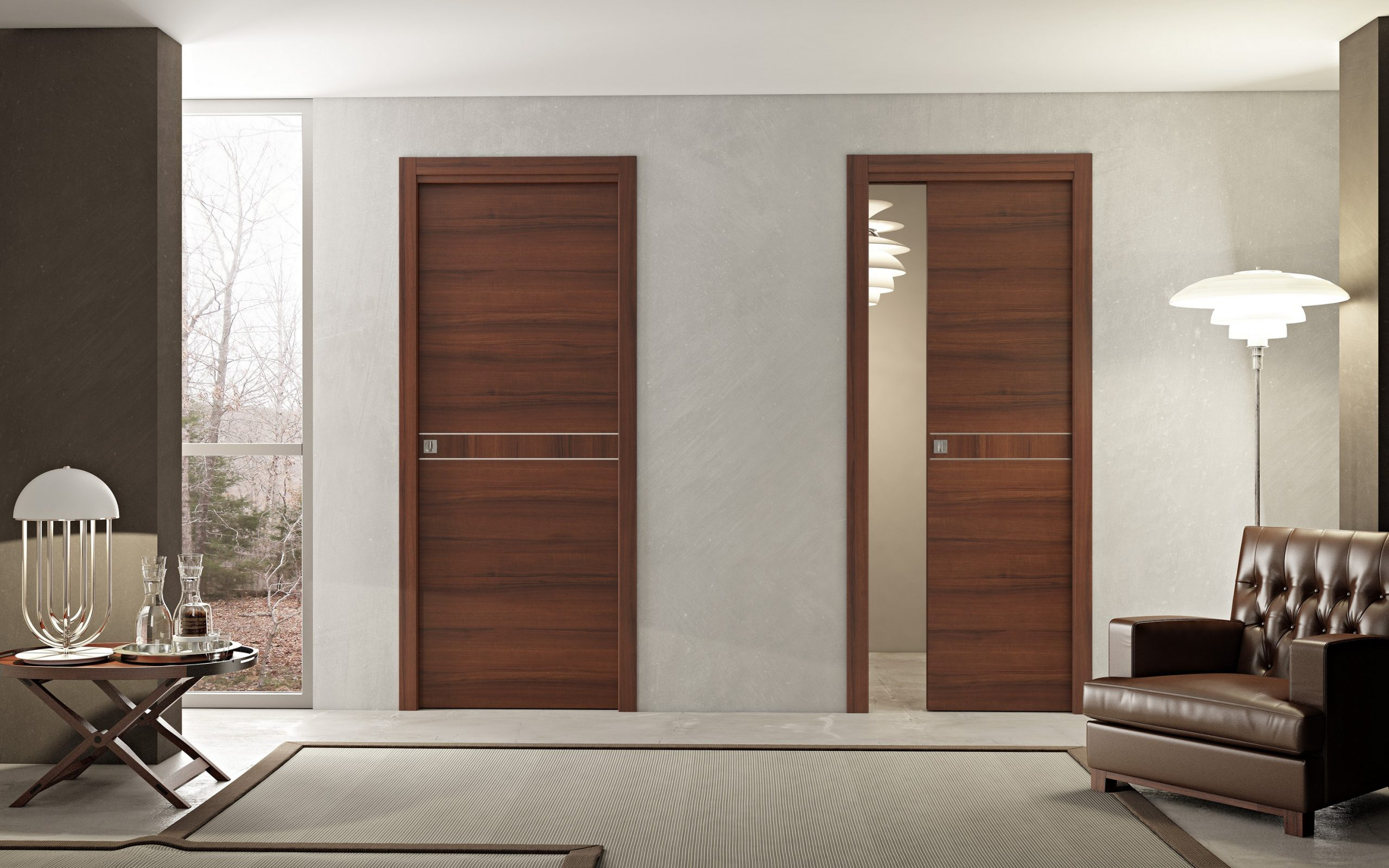
Popular Slab Door Materials and Finishes
When it comes to choosing a slab door, the material and finish you select can drastically affect both the appearance and function of the door. There are several materials to choose from, each offering unique benefits. Here, we’ll dive into the most popular options: wood slab doors, glass slab doors, and composite slab doors.
Wood Slab Doors
Wood slab doors are classic and timeless, often chosen for their natural beauty and durability. The type of wood used for slab doors plays a significant role in the door’s appearance, strength, and cost.
Types of Wood Used for Slab Door:
- Oak: A sturdy, heavy wood, oak is known for its grain pattern and warm tones. It’s perfect for those who want a traditional, rustic look. Oak is a great choice for both solid core slab doors and panel slab doors, as it provides excellent durability.
- Pine: A more affordable option, pine slab doors are lightweight and have a softer grain. They’re ideal for those on a budget but still want the natural look of wood. Pine also takes paint and stain well, making it a versatile choice for customized slab doors.
- Maple: Known for its smooth, uniform grain, maple slab doors are often used in modern and contemporary spaces. The wood has a lighter color, giving rooms a fresh and clean look. It’s durable and holds up well, making it a great option for high-traffic areas.
Pros and Cons of Wood Slab Door:
Pros:
- Aesthetic Appeal: Wood brings warmth and texture to any room. Each wooden slab door is unique due to natural variations in grain and color.
- Durability: Solid wood doors, especially oak and maple, can last for decades if properly maintained.
- Customizable: Wood slab doors can be easily painted, stained, or treated to achieve the desired look.
Cons:
- Cost: High-quality wood like oak or maple can be expensive, especially for solid core slab doors.
- Maintenance: Wood requires more upkeep than other materials, such as regular refinishing to maintain its beauty and protect it from moisture. Susceptibility to
- Warping: Wood doors can warp or crack if exposed to extreme humidity or temperature changes.
Glass Slab Door
Glass slab doors offer a modern, elegant look and are a great choice when you want to bring more light into a room or create a visually open space. While they are often used as panel doors, they are also available in flush slab door designs for a sleek, minimalistic appearance.
When to Consider a Glass Slab Door:
- For a Modern Look: If you’re going for a contemporary design, glass slab doors fit perfectly. They’re often used in living rooms, offices, or as internal slab doors between rooms to maintain an open, airy feel.
- For Light and Transparency: If you want to brighten up a room or create a visual connection between spaces while maintaining some separation, glass doors are an excellent choice.
- For Small Spaces: In small apartments or rooms that need more natural light, glass slab doors can make spaces feel larger and more inviting.
Privacy Glass and Frosted Glass Options:
- Privacy Glass: One common issue with glass slab doors is the lack of privacy. However, privacy glass is a great solution. It’s perfect for bathroom doors, offices, or any room where you need light but don’t want to be seen.
- Frosted Glass: For added privacy while still allowing light to pass through, frosted glass is a popular choice. It’s available in various patterns and finishes, from completely frosted to partial designs, making it a versatile option for your slab door.
Composite Slab Door
Composite slab doors are made from engineered materials that combine wood fibers, resins, and other materials to create a strong, durable product. These doors are becoming more popular due to their affordable price, low maintenance, and variety of finishes.
Benefits of Using Composite Materials for Slab Door:
- Durability: Composite doors are highly durable and resistant to warping, cracking, or rotting, making them ideal for areas with fluctuating temperatures or high humidity.
- Low Maintenance: Unlike wood, composite slab doors don’t require frequent painting or refinishing. They’re also easier to clean, requiring only a simple wipe-down to keep them looking fresh.
- Cost-Effective: Composite slab doors are usually more affordable than solid wood doors, making them a great choice for budget-conscious buyers.
- Eco-Friendly: Some composite doors are made with sustainable materials, making them a greener choice for eco-conscious homeowners.
Popular Composite Door Options:
- MDF (Medium Density Fiberboard): MDF is commonly used for composite slab doors due to its smooth surface, affordability, and ability to take paint well. It’s a popular choice for modern slab doors that need to be sleek and smooth.
- HDF (High Density Fiberboard): HDF is a stronger version of MDF, offering even greater durability. It’s often used in high-traffic areas and is resistant to moisture, making it a great option for bathrooms or kitchens.
- PVC-Coated Doors: PVC-coated composite doors are highly resistant to moisture and easy to clean, making them a good option for exterior doors or rooms prone to humidity.
Summary
In conclusion, slab doors offer a variety of materials and finishes that cater to different needs and styles. Whether you prefer the timeless beauty of wood slab doors, the modern look of glass slab doors, or the durability and low-maintenance benefits of composite slab doors. The key is to choose the material that best fits your design, budget, and functionality needs, ensuring that your slab door adds both style and value to your home.
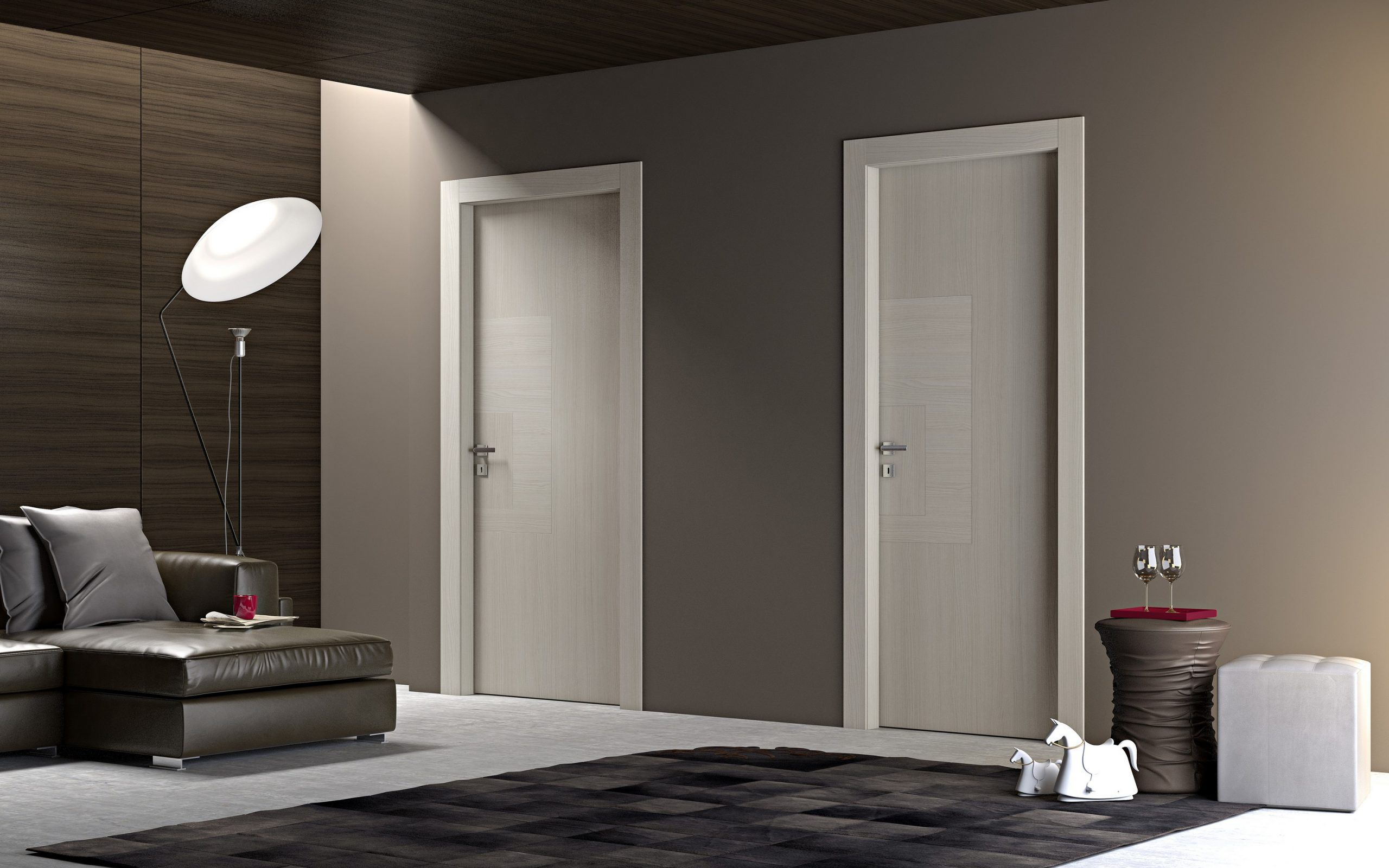
Slab Door Trends and Designs
Slab doors are evolving with the times, reflecting modern interior design trends and offering more personalization than ever before. Whether you’re interested in sleek, minimalist designs or unique custom touches, there’s a slab door design that can fit your space perfectly.
Modern Slab Door Designs
Minimalist and Contemporary Styles
One of the most significant trends in slab door designs is the move toward minimalism and contemporary aesthetics. People are increasingly choosing slab doors that feature clean lines, smooth surfaces, and simple finishes. These doors complement modern interior design by offering a sleek and unobtrusive look.
Minimalist Appeal:
The beauty of modern slab doors lies in their simplicity. With flush slab doors, the absence of panels or decorative features creates a smooth, unbroken surface that fits perfectly with modern, minimalist interiors. This simplicity helps to maintain a clean, uncluttered look in any room, from living spaces to bedrooms.
Contemporary Touches:
Many homeowners are opting for modern finishes such as matte or glossy paints and high-quality veneers. Popular colors include neutral shades like white, black, gray, and soft beige, which add elegance without overwhelming the space. A flush slab door in these shades works well in a wide range of contemporary settings, from urban lofts to high-end residences.
Design Features That Are Trending in Interior Slab Doors:
Textured Finishes:
While many modern slab doors are flat and smooth, some incorporate subtle textures. Textured wood or veneered doors with minimal patterns are becoming more popular, as they add a touch of warmth and depth to the clean design.
Black Hardware:
Matte black hardware is a growing trend for slab doors, offering a sharp contrast to lighter door finishes and contributing to the overall modern look. Handles and knobs in black, along with hinges and locks, are a popular choice to give the door a bold yet refined appearance.
Larger Panels:
In contemporary designs, panel slab doors with larger panels or oversized dimensions are making a statement. These oversized doors can make a dramatic entrance in larger rooms or hallways, adding an architectural element to the space.
Custom Slab Door Ideas
Popular Design Trends
As more people seek individuality and personal style in their homes, custom slab doors are becoming a top choice. With endless possibilities for customization, these doors allow you to tailor them to your exact needs, whether you’re aiming for a specific look or unique functionality.
Bold Color Choices:
While traditional wooden slab doors are often stained or painted in neutral tones, custom slab doors allow for more adventurous color choices. From vibrant blues and reds to soft pastels or even black, custom colors can make a statement or blend seamlessly into a room’s color palette.
Wood and Glass Combinations:
Combining wood and glass elements is a trend that’s gaining momentum in slab doors. Glass slab doors with wooden frames or wood accents can balance privacy and light, offering a functional yet stylish design for spaces like offices, bathrooms, or living rooms. This combo provides an elegant, contemporary vibe while still allowing light to flow freely.
Eco-Friendly Options:
With sustainability at the forefront of modern design, more homeowners are choosing eco-friendly composite materials for their slab doors. These materials not only have a low environmental impact but also offer durability and a sleek look. Recycled wood and sustainable MDF are excellent choices for those looking to make a greener choice without sacrificing style.
Unique Features Like Hardware Options and Decorative Panels:
Unique Hardware Options:
One of the most straightforward ways to personalize a slab door is through hardware. The handles, knobs, hinges, and locks can all be customized to reflect your style. For example, you can opt for sleek, modern pulls or vintage-style knobs to give your slab door a distinctive look.
Decorative Panels and Inlays:
If you want a bit of detail without straying from the simplicity of a slab door, consider adding decorative panels or inlays. Inset panels made from contrasting materials like glass, metal, or wood can bring depth and texture to a slab door.
Smart Doors:
The rise of smart home technology is also influencing slab door designs. Some slab doors can be fitted with smart locks or automated opening systems for added convenience and security. These features are especially popular in modern homes or commercial spaces looking to integrate advanced technology.
Summary
In summary, the trends in slab door designs reflect the growing demand for modern, minimalist, and highly customizable options. Whether you’re looking for a sleek, contemporary door or something more personal and unique, there’s a slab door design that will meet your needs and elevate your interiors.
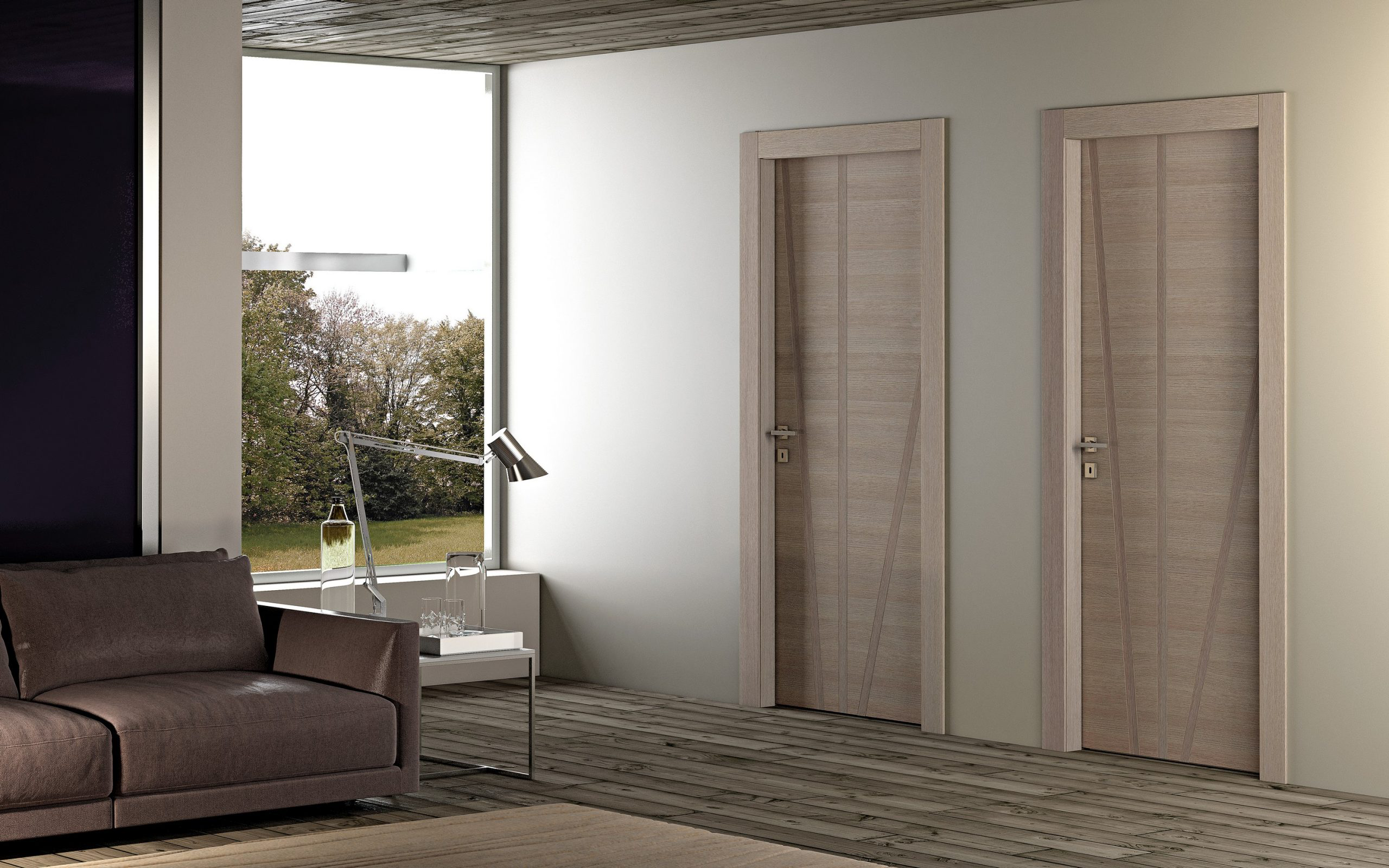
How to Choose the Best Slab Interior Door for Your Home?
Choosing the right slab door for your home can make a big difference in both style and function. With so many options available, it’s important to consider a few key factors before making your decision. Here’s a guide to help you select the perfect slab interior door for your space.
Factors to Consider Before Buying a Slab Door
Before you settle on a slab door, there are several important factors to keep in mind to ensure it fits perfectly with your needs and your home’s overall design.
Door Size, Thickness, and Weight:
The first thing you need to think about is the door size. Measure the height and width of the door frame carefully to ensure the slab door will fit. While most slab doors come in standard sizes, you may need a custom door if your door frame is non-standard. Pay attention to the thickness of the door as well. A thicker slab door (like a solid core door) will offer better sound insulation and a more solid feel. Thicker doors are also more durable, but they tend to be heavier, which could make installation more difficult.
In terms of weight, solid core slab doors are heavier and sturdier, making them ideal for high-traffic areas or where extra privacy is needed. If you’re going for a hollow core slab door, it will be lighter and easier to install, but it might not provide the same level of soundproofing or durability.
Interior Decor Style and Functionality:
When choosing a slab door, think about how it fits with your home’s interior decor style. If you have a modern, minimalist style, flush slab doors with smooth, unbroken surfaces work best. For a more traditional or rustic look, panel slab doors made from wood or veneer will complement the aesthetic.
Consider the functionality of the room where the door will be installed. For example, slab doors for bedrooms or offices may need to provide more privacy, so solid core slab doors are a better choice. On the other hand, hollow core slab doors are great for spaces like closets, laundry rooms, or other less private areas.
Comparing Slab Doors to Other Interior Door Types
There are several types of interior doors, and while slab doors are a popular choice, it’s important to compare them to other styles to see which is the best fit for your needs.
Benefits of Slab Doors Versus Other Door Styles:
Slab Doors vs Pre-Hung Doors:
A pre-hung door comes with the frame and hardware already attached, making it easy to install. However, slab doors are a more flexible option. With slab doors, you can re-use your existing frame, and you also have more control over the style and materials you choose. Pre-hung doors may be a bit easier to install, but they’re less customizable compared to slab doors.
Slab Doors vs Bi-Fold Doors:
Bi-fold doors are often used for closets or areas where space is limited because they fold in half when opened. While bi-fold doors are a good space-saving solution, slab doors are better for providing privacy and sound insulation. If you need a more traditional or private feel, slab doors are the better option, while bi-fold doors are more functional in tight spaces.
Considerations Like Noise Insulation, Aesthetics, and Cost:
Noise Insulation:
If soundproofing is important for your room, slab doors with a solid core will provide much better noise insulation than other door types. Hollow core slab doors are lighter but don’t block sound as effectively. For spaces where privacy and quiet are key, solid core slab doors are the way to go.
Aesthetics:
When it comes to aesthetic appeal, slab doors offer a clean and modern look that fits in with many different styles, from contemporary to rustic. They can also be customized in terms of finish, color, and texture, allowing you to match the door perfectly with your home’s design. Pre-hung or bi-fold doors may not offer the same level of customization or sleek appearance as slab doors.
Cost:
Slab doors can be a more cost-effective option compared to pre-hung doors and bi-fold doors, especially if you’re using an existing door frame. Hollow core slab doors are the most affordable option, while solid core slab doors tend to be more expensive due to their durability and premium features. If you’re on a budget, hollow core slab doors provide a great value. However, for high-traffic areas or rooms requiring more privacy, investing in solid core slab doors is worth the extra cost.
Summary
In conclusion, when choosing a slab door for your home, think about size, thickness, style, and functionality. Slab doors offer great flexibility and customization compared to other door types like pre-hung doors or bi-fold doors. Whether you’re looking for a slab door for privacy, soundproofing, or style, considering your specific needs and preferences will ensure you make the best choice for your space.

Relate FAQ
What is a slab interior door?
A slab interior door is a flat, solid piece of wood or composite material that serves as the door itself, without the frame, hinges, or hardware. It is typically used for custom door installations or when replacing an existing door while reusing the frame and hardware.
What are the benefits of using a slab interior door?
Slab doors are often more affordable than pre-hung doors, especially if you're replacing an existing door without needing a new frame. They're also highly customizable, available in various materials and finishes to suit different design preferences. Additionally, slab doors are a great option for modern and minimalist home styles.
How does a slab interior door differ from a pre-hung door?
A pre-hung door comes with the door slab already attached to a frame, including hinges and other hardware. In contrast, a slab door is just the door itself, requiring you to purchase or install the frame and hardware separately.
What materials are slab interior doors made from?
Slab doors can be made from a variety of materials, including solid wood, MDF (Medium Density Fiberboard), plywood, and composite materials. The choice of material affects the door's weight, durability, and price. Solid wood doors offer a classic aesthetic, while MDF and composite doors are often more affordable and versatile.
Are slab interior doors customizable?
Yes, slab interior doors are highly customizable. You can choose from different wood types, finishes, colors, and even add decorative features such as panels, glass inserts, or unique textures to match your home’s interior design.
How do I measure for a slab interior door replacement?
To measure for a slab door replacement, measure the height and width of your existing door, as well as the thickness of the door. Make sure to measure at multiple points to account for any inconsistencies in the frame. It's crucial to ensure the new door will fit the frame properly before purchasing.
How do I maintain a slab interior door?
To maintain a slab door, regular cleaning is necessary. Dust and wipe the door with a soft cloth. For wooden doors, periodic polishing or oiling is recommended to maintain the wood’s natural finish. If the door is exposed to moisture, sealing it with a protective coat can help prevent damage.
Can a slab door be used for both interior and exterior applications?
While slab doors are commonly used for interior applications, some solid wood or fiberglass slab doors can be used for exterior applications. However, for exterior doors, it’s essential to ensure the door is made of weather-resistant materials and is properly sealed to prevent damage from the elements.
